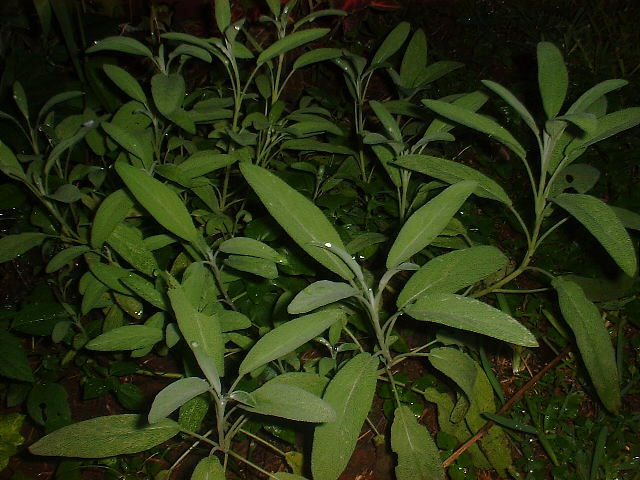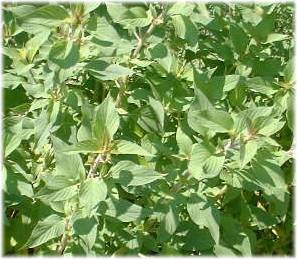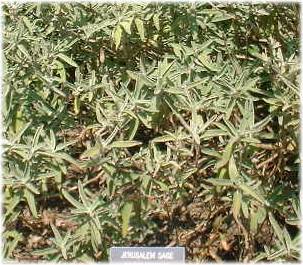 Sage
is a perennial herb with grayish-green leaves that are slightly hairy.
It is native to Spain and the Mediterranean coast, and is a member of the
Salvia family.
It is a variable species, and it's flowers can be blue, pink, or white.
It can be grown in containers and makes a nice container specimen. Sage
can be used fresh, dried, or chopped and frozen in ice cube trays.
It has a lemony, camphor-like, and slightly bitter taste and it is a very
aromatic herb.
Sage
is a perennial herb with grayish-green leaves that are slightly hairy.
It is native to Spain and the Mediterranean coast, and is a member of the
Salvia family.
It is a variable species, and it's flowers can be blue, pink, or white.
It can be grown in containers and makes a nice container specimen. Sage
can be used fresh, dried, or chopped and frozen in ice cube trays.
It has a lemony, camphor-like, and slightly bitter taste and it is a very
aromatic herb.
Sage can be used to flavor almost all kinds of meat and poultry, and is
probably best known as a delicious addition to poultry stuffings.
It adds spice to bland vegetables such as potatoes and eggplant, and also
enhances tomatoes, asparagus, carrots, corn, squash, beans, leeks, onions,
brussels sprouts, oranges, lemons, garlic, and cheese.
Sage is a nice-looking plant and has merit in ornamental plantings, herb
gardens, and
Backyard
Habitats because of it's attractiveness to bees. It's restful,
gray-green leaves compliment brightly colored orange and red flowers beautifully.
Sage prefers well-drained average soil and a sunny situation, although it
does appreciate some afternoon shade in very hot areas. The plant
will grow into a short shrub-like plant when it likes its position
in the garden. It's best not to harvest too many leaves in the first
year, but once the plant is completely established, it benefits from regular
pruning and leaf harvesting. As with most plants, deadheading spent flowers
is also a good policy with Sage. The plant will last several years
before needing replacement.
Sage seed stores poorly, but
germinates quickly, so you will know in a reasonable amount of time if your
seeds are viable. It is more commonly propagated by root division,
but taking stem cuttings will also work. To dry the leaves, snip from
the branches and spread on cloth or paper in the shade. Store in airtight
containers. Dried sage has a stronger flavor, but slightly different
taste then fresh. Sage is a good companion plant for many other vegetables
and herbs. See
Companion Planting
for more information.

Pineapple Sage

Jerusalem Sage

